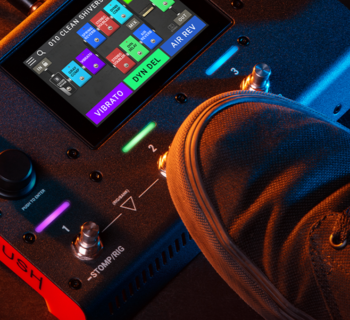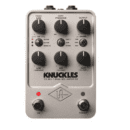Alt-Country Renegade Tennessee Jet Crafts his Unmistakable Sound with AUDIX Microphones (photo credit Jason De Ramo)
In today’s pop-friendly country music, it can be hard to tell one squeaky-clean artist from the next. That’s exactly why Tennessee Jet is such a breath of fresh air. His music achieves a paradoxical aesthetic: Carrying the outlaw-country torch of such artists as Merle Haggard, Waylon Jennings, and even Hank Williams Sr., while tastefully infusing elements of modern rock and grunge without pandering to tropes. His lyrical narratives are never contrived, sometimes political, and always riveting to the final line. A longtime user of AUDIXmicrophones, he sings into an OM5 for full-band performances or a VX5 handheld condenser for more intimate shows. In the studio, an A231 large-diaphragm condenser is his vocal choice, alongside the versatile PDX720 in vocal and instrumental applications, and the i5 and D6 playing supporting roles. As much of an audio perfectionist as he is a country iconoclast, Jet poke with AUDIX about his musical roots, creative influences, and recording process.
“I’ve always used an OM5 live as my vocal mic,” he tells us. “There’s a lot to like about it and AUDIX in general. The build quality is excellent, and they look good onstage, but most importantly, they sound amazing! With the OM5, I can turn my monitors up on stage and be less worried about feedback. Also, the OM5 brings my vocal forward in a loud band mix better than a typical dynamic mic.”
For more intimate and acoustic shows, Jet swaps in the VX5, a condenser mic in a handheld, performance-oriented form factor. “With a dynamic mic like the OM5, you’re going to capture the source best six inches or less in front of the mic, and then it starts to give way by design,” he explains. “With the VX5 it picks up more of the space so if I’m playing solo acoustic or with an ‘unplugged’ band and using in-ear monitors, I can get a little more of the room sound which makes my mix sound more spacious and natural and that’s more enjoyable to sing to. I can get more of a studio sound on stage. On a couple of songs on the new album, I also used the VX5 as a distant room mic.”
For upcoming releases, Jet has recently discovered the A231 large-diaphragm condenser mic and been quite pleased. “The A231 has a very flat frequency response without sounding dull, but it’s not overly bright either. It’s a well-balanced natural sounding condenser,” he observes. “I’ve used it on vocals and acoustic guitars, but also as overheads for a sort of Glyn Johns drum miking approach. The cymbals have presence but sound nice and warm, as opposed to that zingy sizzle you can get with a lot of other modern condenser mics. [The A231] also keeps the midrange nice and strong. It doesn’t give out when the snare is really cracking. Same with the vocal. If you hold a loud note on a really rockin’ song, it keeps it tight.”
Key to Jet’s bass drum sound is a one-two punch of PDX720 and D6. “I found that when you don’t use either of the filters, [the PDX720 is] a really big sounding mic with a lot of low end. I’ve used it in that capacity outside the kick drum, in conjunction with a D6. I like to take the front head off of the bass drum and dampen the inside quite a bit with a pillow touching the batter head. I point the D6 right at the beater from the inside a few inches from the head to capture the attack, which the D6 does famously, and then I augment that with the PDX for the “kick out”, placed about where the front head would’ve been or a bit more out. With those mics together I can get a nice tight pillowy sound with plenty of attack.”
Tennessee Jet’s star is certainly rising, and any musician envious of its ascent would do well to take the advice he says he’d give to his younger self: “Always put yourself in a position where you have to do something you haven’t done before — where it makes you uncomfortable. That’s the best way to grow.”














